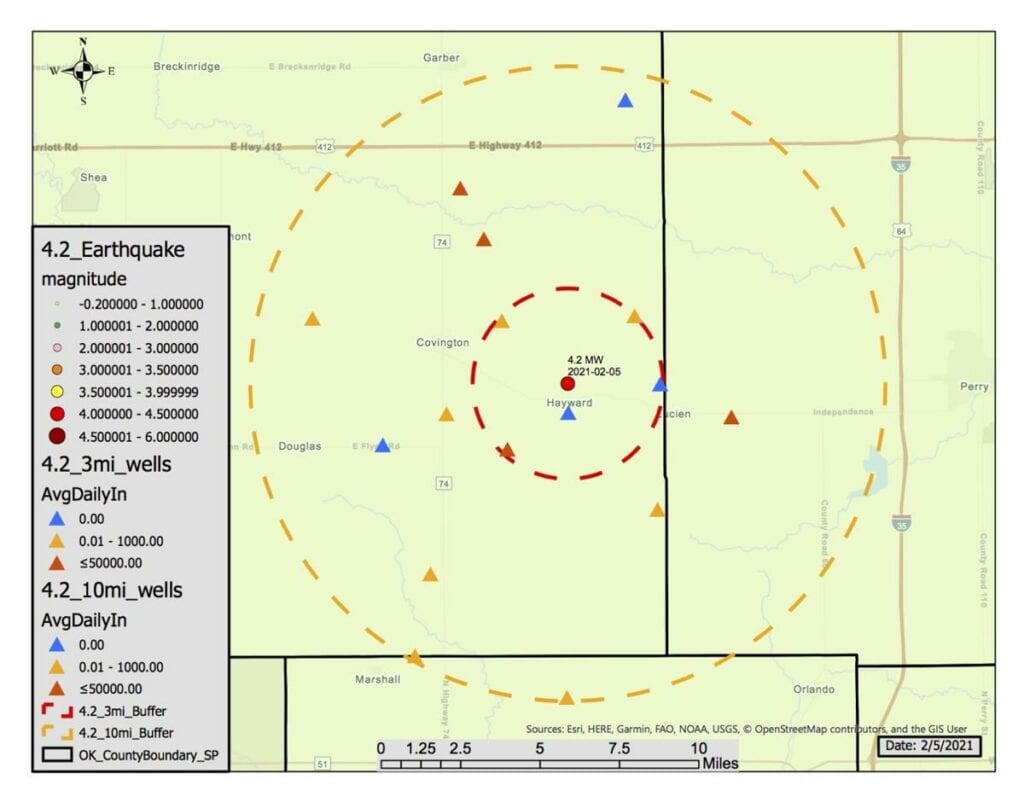A series of small earthquakes shook north central Oklahoma, starting at 10:16 a.m. on February 5, approximately 3 miles west/north-west of Lucien, Oklahoma, near Perry. The largest quake, which was 4.2 magnitude, occurred at 11:48 a.m. and was felt throughout the Sapulpa area.

According to the United States Geological Survey, since 2009, “Oklahoma experienced a surge in seismicity. This surge was so large that its rate of magnitude 3 and larger earthquakes exceeded California’s from 2014 through 2017.”
Though it has been established that these earthquakes are the result of processes related to the oil and gas industry, only a small number of these earthquakes were caused by hydraulic fracturing (fracking).
The majority of earthquakes in Oklahoma are caused by what is commonly called “wastewater disposal”. Wastewater disposal is a process separate from extraction, in which waste fluid from oil and gas production is sent thousands of feet below the surface, to a sandstone, or limestone formation. This depth is typically below groundwater or drinking water aquifers. In Oklahoma, over 90% of the wastewater fluid is a byproduct of the oil extraction process and not frack waste fluid.
In response to a cluster of earthquakes recorded by the United States Geological Survey (USGS), including one magnitude 4.2 quake, in the Covington-Lucien area, the Oklahoma Corporation Commission ordered disposal wells in the area to “cease or reduce operations.”
According to a statement from the OCC, the decision was made by OCC’s Induced Seismicity Department. This order will reduce disposal volume by 9,000 barrels a day.
Matt Skinner, OCC spokesman, told the press: “Researchers are in broad agreement that disposal into the Arbuckle formation in parts of Oklahoma can raise risk of induced seismicity. Commission ISD directives since 2015 limiting or eliminating such disposal are among the actions credited with the sharp decrease in Oklahoma’s seismicity rate since 2015.”










